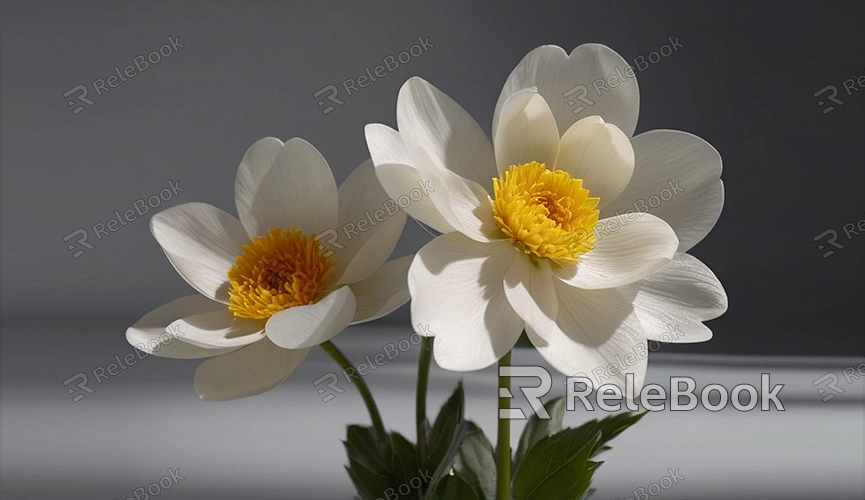Blender how to make a 3d model of a flower
Creating a 3D model of a flower not only helps enhance your modeling skills but also adds beautiful natural elements to virtual scenes, animations, or game designs. Blender, a powerful and free 3D modeling software, is well-suited for crafting intricate models like flowers. This guide will walk you through the process of creating a 3D flower model from scratch in Blender.
Preparation

First, ensure you have Blender installed and are familiar with its basic operations. If you're new to Blender, it’s helpful to learn some fundamentals of modeling, sculpting, materials, and rendering. Understanding how to create and modify basic geometric shapes, use toolbars, and navigate shortcuts will make your modeling process smoother.
Before you start modeling, gather reference images of flowers. These images will help you understand the shape, arrangement, and overall structure of the petals. Referencing real flower pictures will make your model more realistic.
Starting the Modeling Process
1. Creating Petals
The core element of a flower is its petals, so start by creating a petal. Begin with a simple plane and use extrusion and scaling to shape the petal. In Blender's Edit Mode, you can precisely adjust each vertex and edge to give the petal a natural curve and delicate shape.
The petal's thickness can be achieved using the "Extrude" command, preventing it from looking too flat. After modeling one petal, use the Mirror Modifier or Array Modifier to duplicate multiple petals and arrange them to form the natural shape of the flower.
2. Modeling the Stamen
The stamen is the central part of the flower, often composed of many small details. In Blender, you can start with a sphere or cylinder to create the stamen and then add details like pollen grains using sculpting or editing tools. The Subdivision Surface Modifier can smooth and round out the stamen for a more refined appearance.
3. Refining Petals and Stamen
Once the basic shapes of the petals and stamen are complete, you can refine their details. Use the Sculpt Mode to better simulate the natural curves and folds of the petals. For the stamen, adding irregular textures and details will make it more lifelike.
Adding Materials and Textures
After modeling, the next step is to apply materials and textures to the flower. In Blender, you can assign different colors and glossiness to the petals to make them look more realistic. Petal materials are often semi-transparent and smooth, so adjusting opacity and reflection will help achieve these effects.
Textures are crucial for realism. If you want the flower's surface to have tiny textures, like fine lines on petals or a grainy texture on the stamen, Blender’s built-in texture generation tools can help. High-quality 3D texture resources are also essential.

If you need high-quality 3D textures and HDRI for your models and virtual scenes, you can download free resources from [Relebook](https://textures.relebook.com). For exquisite 3D models, visit [Relebook 3D Models](https://3dmodels.relebook.com) to access a wide range of premium resources that will enhance your creative projects.
Final Rendering
Rendering in Blender is the key step to turning your 3D model into a realistic 2D image. For rendering a flower model, lighting setup is crucial. You can add soft ambient light and point lights to simulate the natural lighting conditions of the flower.
Additionally, Blender’s Cycles render engine can produce high-quality images, accurately simulating light reflection, refraction, and scattering. When adjusting render settings, you can choose higher sample values for clearer images, though this may increase render time.
Once rendering is complete, you will have a detailed, color-rich image of your flower 3D model. If needed, you can export the entire model for use in other projects.
Creating a 3D model of a flower is not just a technical challenge but also an artistic process. From basic petal modeling to detailed stamen sculpting, and from material application to lighting adjustments, each step requires careful design and refinement. Through persistent practice and exploration, you can create increasingly complex and beautiful 3D flower models.
Whether you’re a beginner or an experienced modeler, Blender offers limitless possibilities. With the right tools and resources, you can bring your creative ideas to life. If you need more 3D resources for your models and scenes, consider visiting Relebook for high-quality textures and models.
Continuously refine and optimize your work during the creative process to enhance your technical skills and make your models more realistic and vibrant. We hope this guide helps you understand how to create a 3D flower model in Blender.

